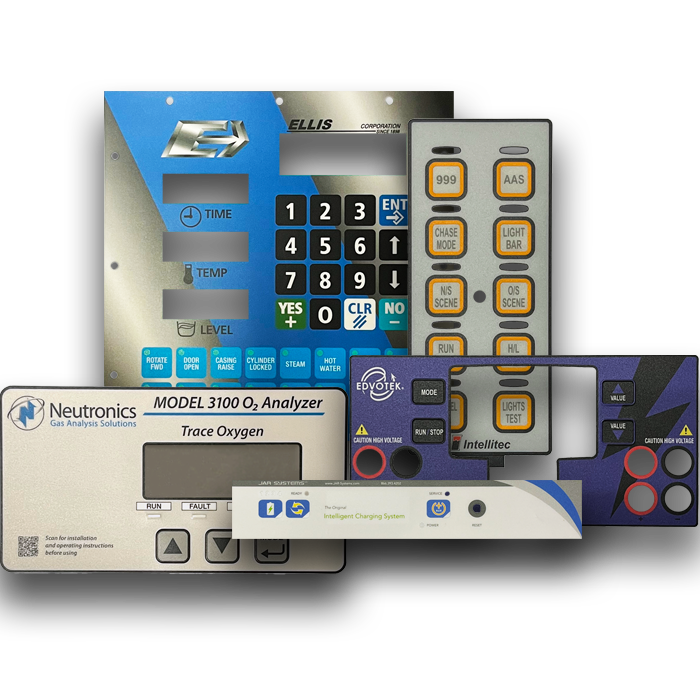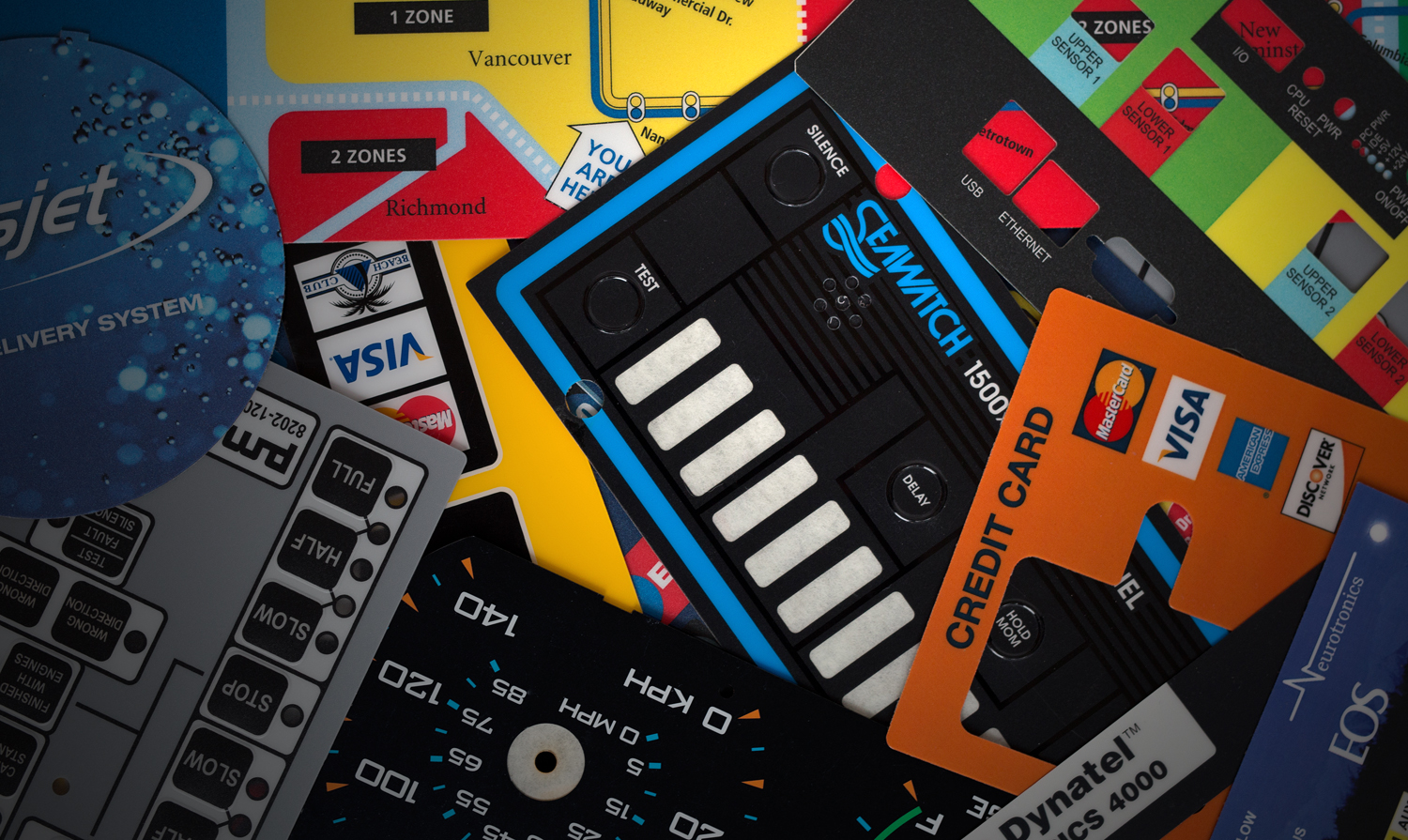How Companies Benefit from Using Specialized Graphic Overlays for Equipment Labels
How Companies Benefit from Using Specialized Graphic Overlays for Equipment Labels
Blog Article
Recognizing How Graphic Overlays Work to Improve Your Innovative Projects
Graphic overlays serve as a crucial element in the world of creative tasks, enhancing both aesthetic communication and audience interaction. The successful assimilation of these overlays requires careful consideration of layout principles and goals.
What Are Graphic Overlays?
Graphic overlays are visual elements that are positioned on top of a base photo or user interface to boost interaction and customer experience. They offer numerous objectives, including offering added information, leading user interaction, and boosting visual appeal. Typical applications of graphic overlays can be located in electronic user interfaces, advertising, and instructional materials.

Graphic overlays are frequently created making use of style software program, allowing developers to manipulate openness, shade, and size to accomplish the desired impact. They can be static or dynamic, with computer animations that attract the visitor's eye and boost involvement. The calculated usage of visuals overlays not just boosts visual pecking order but also aids in delivering a clear and systematic message. Comprehending exactly how to successfully carry out visuals overlays is vital for designers aiming to boost their innovative tasks.

Benefits of Using Graphic Overlays
Utilizing graphic overlays can substantially boost the performance of aesthetic interaction throughout different tools. Among the main benefits is the capability to share complex information succinctly. By layering graphics, text, and photos, overlays help with the presentation of data in a more absorbable layout, making it less complicated for audiences to grasp essential concepts rapidly.
Additionally, visuals overlays can improve aesthetic allure, accentuating particular components within a layout. This is specifically useful in marketing and advertising, where catching the viewer's interest is extremely important. The strategic use of shades, shapes, and typography in overlays can develop a cohesive and appealing visual story, enhancing brand acknowledgment.
Furthermore, graphic overlays give versatility in design. They enable designers to adapt content for different systems without beginning from scratch, making certain uniformity across different channels. This adaptability is crucial in today's digital landscape, where content must be maximized for varied devices and layouts.
Types of Graphic Overlays
When taking into consideration the different types of visuals overlays, it is vital to identify their diverse applications throughout different industries. Graphic overlays can be categorized mostly right into three kinds: functional, ornamental, and educational.
Functional overlays are created to enhance the use of a product. Generally discovered in electronic tools, these overlays usually supply tactile feedback via elevated buttons or textured surfaces, enhancing user communication. They can additionally act as a safety layer, protecting the underlying parts from damage.
Decorative overlays concentrate on aesthetic improvement, enabling brand names to express their identity via vibrant styles and custom graphics. These overlays prevail in product packaging, advertising and marketing, and point-of-sale materials, where aesthetic allure is critical for drawing in clients.
Educational overlays, on the other hand, are utilized to share vital data or directions. They can be seen in applications such as signage, customer guidebooks, and training graphics, where clarity and readability are extremely important.
Each sort of visuals overlay serves an one-of-a-kind objective, adding to the overall effectiveness of imaginative jobs while dealing with specific demands within different sectors. Understanding these differences is essential for picking the ideal overlay for your task.
Ideal Practices for Execution
To guarantee the successful execution of visuals overlays, it is critical to establish a clear understanding of the project's objectives and the particular demands of the end-users. Begin by performing thorough research to identify the target audience and hop over to here their choices, as this will certainly inform style options and performance.
Following, develop a detailed plan that describes the overlay's assimilation, purpose, and layout procedure. This strategy ought to include customer interface considerations, making sure that overlays boost as opposed to block the customer experience - Graphic Overlays. Consider the aesthetic hierarchy and maintain consistency in layout elements, such as shade typefaces, icons, and schemes, to promote brand name coherence
Evaluating is important; collect comments from a representative example of users to determine potential concerns and areas for renovation. Iterate on the layout based on individual input and efficiency data. In addition, make sure compatibility across different devices and platforms to maximize availability.
Devices for Producing Overlays
Developing effective visuals overlays requires the right devices to convert style principles into practical applications. Numerous software application and platforms are offered, each customized to specific demands and skill levels.
Adobe Photoshop and Illustrator are sector standards, offering substantial capabilities for developing and controling overlays. These tools supply sophisticated features such as layer monitoring, mixing settings, and vector graphics, allowing developers to create detailed and top notch overlays.
For those seeking a much more easy to use strategy, Canva and Figma are exceptional choices (Graphic Overlays). Canva's user-friendly user interface permits individuals to develop overlays promptly using pre-designed design templates, while Figma helps with collective style in real-time, making it suitable for groups
Furthermore, open-source choices like GIMP and Inkscape supply durable capabilities without the linked prices of exclusive software. These devices permit versatility in style and can suit various documents formats, making sure compatibility across various platforms.

Conclusion
In final thought, visuals overlays serve as effective tools for boosting innovative tasks by giving visual quality, aesthetic allure, and brand uniformity. By comprehending the fundamental concepts and benefits linked with graphic overlays, makers can have a peek at this website dramatically enhance the high quality and efficiency of their aesthetic interactions.
Graphic overlays serve as a critical element in the realm of imaginative tasks, enhancing both aesthetic interaction and target market interaction.Graphic overlays are often produced making use of design software program, their explanation allowing designers to control dimension, transparency, and color to achieve the preferred impact.Moreover, visuals overlays can increase aesthetic appeal, attracting interest to particular elements within a design.Additionally, visuals overlays supply adaptability in design.In final thought, visuals overlays serve as powerful devices for improving innovative jobs by supplying visual quality, visual charm, and brand consistency.
Report this page